The true art of memory is the art of attention. S AMUEL J OHNSON
Revised paperback edition first published in 2011 First published in Great Britain in 2007 by Michael OMara Books Limited 9 Lion Yard, Tremadoc Road London SW4 7NQ Copyright Michael OMara Books Limited 2007, 2011 Illustrations Louise Morgan 2007, 2011 for www.artmarketillustration.com All rights reserved. No part of this publication may be reproduced, stored in a retrieval system, or transmitted by any means, without the prior permission in writing of the publisher, nor be otherwise circulated in any form of binding or cover other than that in which it is published and without a similar condition including this condition being imposed on the subsequent purchaser. A CIP catalogue record for this book is available from the British Library. ISBN 978-1-84317-658-9 eISBN 978-1-84317-431-8 www.mombooks.com Extra illustration David Woodroffe Revised by K DESIGN Contents


Thirty days hath September, April, June and November... How many times, perhaps anxiously awaiting payday, have you muttered this saying to yourself? Or racked your brains for the name of the king who succeeded Henry II, in order to squash that bumptious, know-all guest at a dinner party? No doubt about it, memorys a funny business. But in a happier and perhaps less hectic age, many useful, if not invaluable facts were taught by the use of mnemonics, simple memory aids which, once learned, fixed the information in the brain for ever.
This book takes a nostalgic look back at the many quirky and amusing ways you were taught to remember stuff at school or university, and which can still be used to solve a problem or cap an argument. Packed with clever verses, engaging acronyms, curious and sometimes hilarious sayings, I Before E (Except After C) includes all the mnemonics you could ever need (and some you probably wont). From simple rhymes about spelling S is the verb and C is the noun,/Thats the rule that runs the town will sort out practise/practice, license/licence, and so on for you to useful phrases for recalling important facts from history divorced, beheaded, died,/divorced, beheaded, survived gives, in chronological order, the fates of Henry VIIIs six wives life-saving acronyms such as ABC (Airway, Breathing, Circulation), or just useful bits of general knowledge Theres a little RED PORT LEFT in the bottle tells you the colour, name and position of navigation lights on a ship or aircraft I Before E is an amusing collection of the many ingenious mind tricks devised to help us learn and understand. 
 The Alphabet Before we could read the complete works of Shakespeare, as children we first had to learn the alphabet. Some of us will have recited the letters to the tune of Twinkle, Twinkle, Little Star, a method made famous by Big Bird from the TV programme Sesame Street. abcdefg,hijklmnop,qrstuv,wxy and z.Now I know my A, B, Cs,next time wont you sing with me? Because the letters lmnop have to be sung twice as fast as the rest of the letters in the rhyme, some children have mistakenly assumed that elemenopee is a word. abcdefg,hijklmnop,qrstuv,wxy and z.Now I know my A, B, Cs,next time wont you sing with me? Because the letters lmnop have to be sung twice as fast as the rest of the letters in the rhyme, some children have mistakenly assumed that elemenopee is a word.
The Alphabet Before we could read the complete works of Shakespeare, as children we first had to learn the alphabet. Some of us will have recited the letters to the tune of Twinkle, Twinkle, Little Star, a method made famous by Big Bird from the TV programme Sesame Street. abcdefg,hijklmnop,qrstuv,wxy and z.Now I know my A, B, Cs,next time wont you sing with me? Because the letters lmnop have to be sung twice as fast as the rest of the letters in the rhyme, some children have mistakenly assumed that elemenopee is a word. abcdefg,hijklmnop,qrstuv,wxy and z.Now I know my A, B, Cs,next time wont you sing with me? Because the letters lmnop have to be sung twice as fast as the rest of the letters in the rhyme, some children have mistakenly assumed that elemenopee is a word.
For the rhyme to work with the Z, you have to use the American pronunciation of zee rather than zed. If you didnt sing the ABC to the tune of Twinkle, Twinkle, Little Star then you might have used the tune of Baa, Baa, Black Sheep instead, which has a very similar rhythm and melody.  The following ABC memory rhyme entitled The Tragical Death of A, Apple Pie, Who Was Cut in Pieces, and Eaten By Twenty-Six Gentlemen, With Whom All Little People Ought to be Very Well Acquainted, was a popular way of teaching the alphabet to youngsters in the nineteenth century, though it dates back at least as far as the reign of Charles II (166085). A was an apple pie B bit it, C cut it, D dealt it, E eats it, F fought for it, G got it, H had it, I inspected it, J jumped for it, K kept it, L longed for it, M mourned for it, N nodded at it, O opened it, P peeped in it, Q quartered it, R ran for it, S stole it, T took it, U upset it, V viewed it, W wanted it, X, Y and Z all wished for and had a piece in hand. The Five Vowels The English alphabet has five soft vowels: A E I O U. This sequence of letters generally tends to roll off the tongue quite naturally, but for anyone who has trouble remembering the order of vowels, here are a couple of useful phrases: Anns Egg Is On Us Anthonys Ego Is Over Used
The following ABC memory rhyme entitled The Tragical Death of A, Apple Pie, Who Was Cut in Pieces, and Eaten By Twenty-Six Gentlemen, With Whom All Little People Ought to be Very Well Acquainted, was a popular way of teaching the alphabet to youngsters in the nineteenth century, though it dates back at least as far as the reign of Charles II (166085). A was an apple pie B bit it, C cut it, D dealt it, E eats it, F fought for it, G got it, H had it, I inspected it, J jumped for it, K kept it, L longed for it, M mourned for it, N nodded at it, O opened it, P peeped in it, Q quartered it, R ran for it, S stole it, T took it, U upset it, V viewed it, W wanted it, X, Y and Z all wished for and had a piece in hand. The Five Vowels The English alphabet has five soft vowels: A E I O U. This sequence of letters generally tends to roll off the tongue quite naturally, but for anyone who has trouble remembering the order of vowels, here are a couple of useful phrases: Anns Egg Is On Us Anthonys Ego Is Over Used  Parts of Speech After learning the alphabet, the next step is to come up with coherent sentences.
Parts of Speech After learning the alphabet, the next step is to come up with coherent sentences.
The rhyme below categorizes each of the parts of speech, giving a clear example of the different type of word. It dates back to 1855 and was written by David B. Tower and Benjamin F. Tweed: Three little words you often see Are articles: a, an and the. A nouns the name of any thing, As: school or garden, toy or swing. Verbs tell of something being done: To read, write, count, sing, jump or run. Verbs tell of something being done: To read, write, count, sing, jump or run.
How things are done, the adverbs tell, As: slowly, quickly, badly, well. Conjunctions join the words together, As: men and women, wind or weather. The preposition stands before A noun as: in or through a door. The interjection shows surprise As: Oh, how pretty! or Ah! How wise! The whole are called the parts of speech, Which reading, writing, speaking teach.  A different rhyme called The Parts of Speech is similarly pithy, and serves as another useful reminder of the different components of the English language. The origin of these verses is unknown.
A different rhyme called The Parts of Speech is similarly pithy, and serves as another useful reminder of the different components of the English language. The origin of these verses is unknown.
Next page

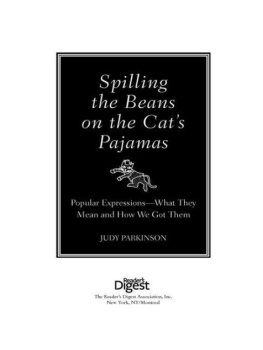
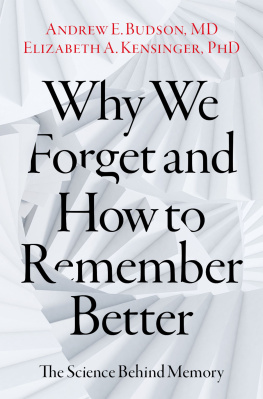
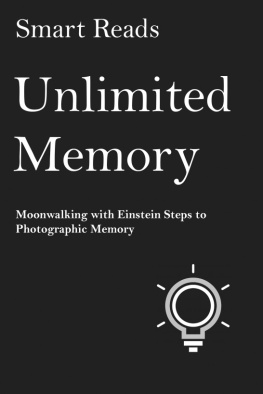



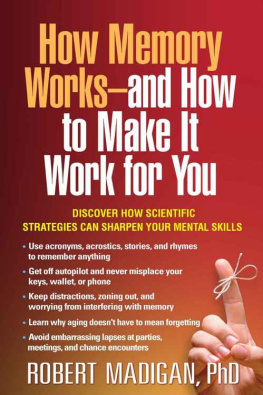
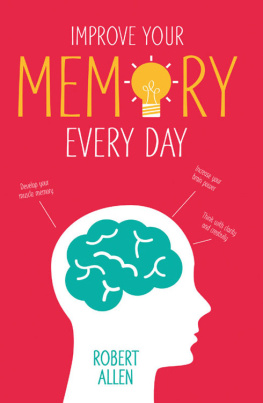




 The following ABC memory rhyme entitled The Tragical Death of A, Apple Pie, Who Was Cut in Pieces, and Eaten By Twenty-Six Gentlemen, With Whom All Little People Ought to be Very Well Acquainted, was a popular way of teaching the alphabet to youngsters in the nineteenth century, though it dates back at least as far as the reign of Charles II (166085). A was an apple pie B bit it, C cut it, D dealt it, E eats it, F fought for it, G got it, H had it, I inspected it, J jumped for it, K kept it, L longed for it, M mourned for it, N nodded at it, O opened it, P peeped in it, Q quartered it, R ran for it, S stole it, T took it, U upset it, V viewed it, W wanted it, X, Y and Z all wished for and had a piece in hand. The Five Vowels The English alphabet has five soft vowels: A E I O U. This sequence of letters generally tends to roll off the tongue quite naturally, but for anyone who has trouble remembering the order of vowels, here are a couple of useful phrases: Anns Egg Is On Us Anthonys Ego Is Over Used
The following ABC memory rhyme entitled The Tragical Death of A, Apple Pie, Who Was Cut in Pieces, and Eaten By Twenty-Six Gentlemen, With Whom All Little People Ought to be Very Well Acquainted, was a popular way of teaching the alphabet to youngsters in the nineteenth century, though it dates back at least as far as the reign of Charles II (166085). A was an apple pie B bit it, C cut it, D dealt it, E eats it, F fought for it, G got it, H had it, I inspected it, J jumped for it, K kept it, L longed for it, M mourned for it, N nodded at it, O opened it, P peeped in it, Q quartered it, R ran for it, S stole it, T took it, U upset it, V viewed it, W wanted it, X, Y and Z all wished for and had a piece in hand. The Five Vowels The English alphabet has five soft vowels: A E I O U. This sequence of letters generally tends to roll off the tongue quite naturally, but for anyone who has trouble remembering the order of vowels, here are a couple of useful phrases: Anns Egg Is On Us Anthonys Ego Is Over Used  Parts of Speech After learning the alphabet, the next step is to come up with coherent sentences.
Parts of Speech After learning the alphabet, the next step is to come up with coherent sentences.